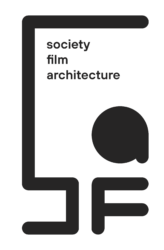Why Posters?
The poster is a medium defined by the playful arrangement of space within two dimensions. It embodies freedom—particularly freedom of expression—by challenging conventional hierarchies of iconography, materiality, scale, temporality, colour, rhythm, tone, abstraction, and composition. Designing a poster requires a process of systematic synthesis, in which the aim is not merely aesthetic, but communicative: to translate concepts and language into a clear visual message. The effectiveness of a poster lies in its ability to balance conceptual intent with visual form and textual content.
Chromatic choices often become deliberate acts of interpretation. For instance, in Season 2, the reduction of colour saturation referenced Fritz Lang’s monochromatic Metropolis, while simultaneously contrasting with the vibrant spectrum of activities—workshops, exhibitions, and round tables—that defined the project’s context. The poster thus becomes both commentary and counterpoint, a negotiation between film imagery and collective experience.
SF(a) posters are marked by their open-endedness. They resist definitive closure, instead functioning as dynamic signals—less about fixed destinations and more about the generative starting points that lead to unforeseen outcomes. Participants in the workshops—students, artists, architects, writers—become both the creators and the subjects of these visual statements. Each poster crystallises a singular moment in time, holding within it anticipation, encounter, and memory.
Visual Communication
How can a message be conveyed without prescribing interpretation or predetermining its reception? This is the central question in designing an alternative poster. Each work embodies a didactic dimension, not as instruction, but as inquiry: a fusion of personal observation and adaptive experimentation. In this way, posters open fresh perspectives, offering audiences new ways of understanding architecture, film, and society.
